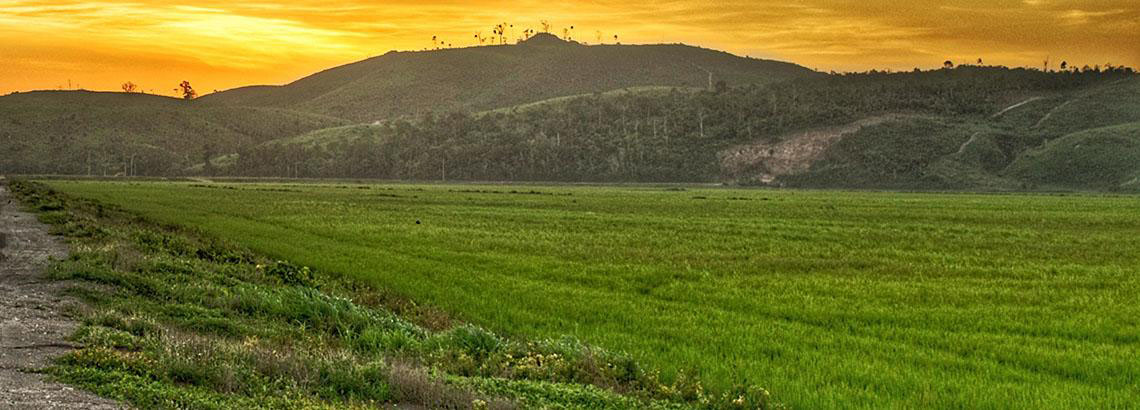
Comparative Paleoethnobotany of the Maya Lowlands
This project uses archaeobotanical data to examine human-environmental relationships across time and space in the Maya Lowlands of Mexico, Belize and Guatemala. Working with samples of botanical remains from many different Maya archaeological sites, this research asks the following questions:
- How did human-environmental relationships change over time within local ecological zones?
- How did the use of resources differ macro-regionally?
- How was resource utilization similar macro-regionally?
- How did local resource users adapt to systemic environmental changes?
- How did local resource users adapt to systemic political and economic changes?
- How did cultural logics influence resource use and management?
- How can we address questions about human-environmental relationships given variability in sampling and preservation?
Project Details
Paleoethnobotany is still a relatively under-utilized field in Maya archaeology (and Mesoamerican archaeology generally). Yet archaeologists and anthropologists working in this area have been interested in environmental change for decades — an interest that has exploded even more in the past 10 years. In general, the role of archaeobotany in this topic has been minimal. Most research has used micro-floral data as proxies for regional environmental conditions.
Macrofloral data, however, often have not been studied systematically in order to examine resource use and change. Furthermore, no systematic effort has been devoted to integrating archaeobotanical data throughout the region in order to examine what we know about human-environmental relations using data that most directly reflect resource use: plant remains.
Integrating and comparing data from many archaeological sites must confront a lot of issues regarding sampling and preservation, but doing so is essential in order to use these data to make observations about the past. This “multi-sited” approach, however, will provide insight into both local and extra-local social, political, economic, cultural and ecological processes. It will also offer systematic assessments of our current understandings of ancient human-plant relationships as well as lacunae in data and knowledge — and, hence, areas for future research.
Methodologically, this project focuses on (1) the tabulation of archaeobotanical data from Maya archaeological sites in the published literature into a regional database (MS Access); (2) the tabulation of comparative ethnobotanical data from the published literature into a regional database; and (3) the identification and tabulation of archaeobotanical samples recovered from multiple archaeological sites, reflecting the collaboration with archaeologists from multiple institutions. Archaeological sites include habitation sites and cave sites. Moreover, the analysis and interpretation of these data are enriched by a comparative approach to human-environmental relations that also includes data from archaeological sites in highland Mexico, the Caribbean, and the Southeastern United States.
Archaeobotanical samples analyzed are from the following archaeological sites:
Belize
- Actun Nak Beh (cave), Cayo Belize
- Actun Yaxteel Ahau (cave), Cayo Belize
- Actun Wayazba Kab (cave), Cayo Belize
- Barton Creek Cave (cave), Cayo Belize
- Actun Chapat (cave), Cayo Belize
- Actun Chechem Ha (cave), Cayo Belize
- Actun Halal (cave), Cayo Belize
- Tarantula Cave (cave), Cayo Belize
- Cuychen (cave), Cayo Belize
- Baking Pot (habitation site/center), Cayo Belize
- Pooks Hill (habitation site), Cayo Belize
- Pacbitun (habitation site/center), Cayo Belize
- Caye Coco (habitation site), Orangewalk Belize
- Avila (habitation site), Orangewalk Belize
Guatemala
- Cueva de las Pinturas (cave), Petén, Guatemala
- Grietas de Aguateca (caves), Petén, Guatemala
- Ucanal (habitation site/center), Petén, Guatemala
- Tayasal (habitation site/center), Petén, Guatemala
Mexico
- Xuenkal (habitation site/center), Yucatan, Mexico
- Mayapan ((habitation site/center), Yucatan, Mexico
- Viste Alegre (habitation site/center), Quintana Roo, Mexico
- Xaltocan (habitation site/center), Mexico, Mexico
- Dainzú (habitation site/center), Oaxaca, Mexico
United States and Caribbean
- Crystal River, Florida
- Dominica
Partners: Georgia State University | University of Montreal | Kennesaw State University | SUNY Albany | Queens College | California State University, Los Angeles | Northern Arizona University | Northwestern University | The Field Museum of Natural History | Kent State University | University of Miami | University of South Florida
Research Team
- Christopher T. Morehart, Arizona State University